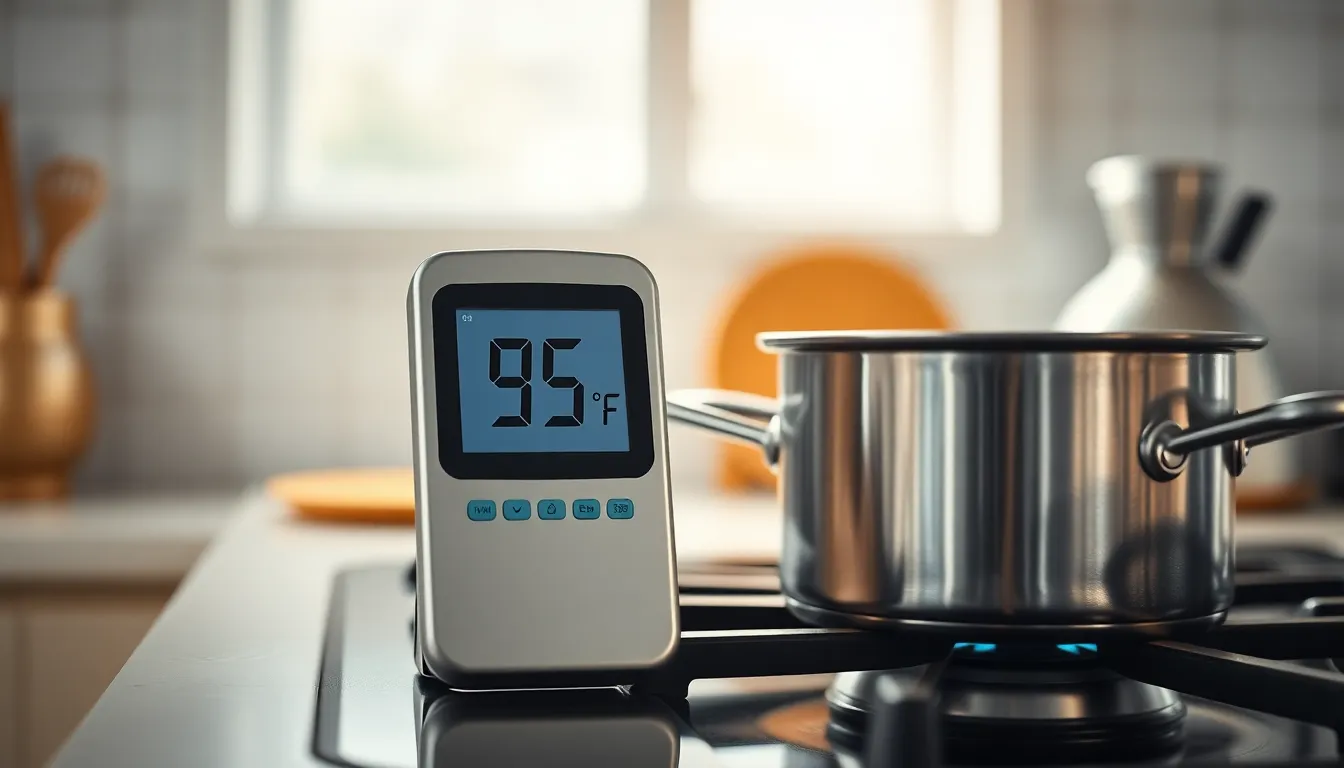Converting temperatures between Fahrenheit and Celsius can be a bit tricky, especially when dealing with higher numbers like 95 degrees Fahrenheit. Understanding this conversion is essential for many, whether they’re traveling abroad, cooking, or simply curious about weather reports.
In the world of temperature measurement, these two scales serve different purposes and are used in various regions. While the Fahrenheit scale is widely used in the United States, Celsius is the standard in most other countries. Knowing how to convert between them not only helps in daily life but also enhances one’s knowledge of global practices.
This article will break down the conversion process from 95 degrees Fahrenheit to Celsius, making it easy to grasp and apply in real-life situations.
Table of Contents
ToggleUnderstanding Temperature Conversion
Understanding temperature conversion enhances clarity in daily tasks involving temperature readings. It streamlines communication across different regions and simplifies planning in diverse activities such as cooking and travel.
Importance of Temperature Conversion
Temperature conversion holds significant value in various contexts. Accuracy in temperature readings ensures effective cooking, as recipes often specify temperatures in distinct scales. Knowing the precise conversion aids travelers in adjusting to different climates and navigating local weather forecasts. Additionally, many scientific experiments require accurate temperature measurements, where temperature conversion becomes crucial for data fidelity. Ensuring awareness of both Fahrenheit and Celsius is essential for everyday interactions.
Common Temperature Scales
Fahrenheit and Celsius are the two primary temperature scales used worldwide.
- Fahrenheit: Mainly utilized in the United States, this scale sets the freezing point of water at 32°F and the boiling point at 212°F. It divides the temperature gradient into 180 equal parts.
- Celsius: Widely used internationally, Celsius marks the freezing point of water at 0°C and the boiling point at 100°C, establishing a metric system based on 100 equal parts.
- Kelvin: As the standard unit of temperature in the physical sciences, Kelvin begins from absolute zero. This scale increments in 1K corresponding to equal temperature changes, with 0K absolute zero equating to -273.15°C.
Understanding these scales enables better adaptation to different environments and enhances comprehension of global temperature-related communications.
Converting 95 Degrees F to C

Converting temperatures from Fahrenheit to Celsius involves a straightforward formula that ensures accuracy. This section breaks down the step-by-step process and provides a concrete example for clarity.
Step-by-Step Conversion Formula
- Start with the Temperature in Fahrenheit. Use the initial temperature of 95°F.
- Subtract 32 from the Fahrenheit Temperature. Perform the calculation:
95 – 32 = 63 - Multiply the Result by 5/9. Apply this conversion factor:
63 × 5/9 = 35 - Resulting Celsius Temperature. The temperature in Celsius is approximately 35°C.
Example Calculation
An example calculation illustrates the conversion process:
- Input: 95°F
- Calculation Steps:
- Subtract 32: 95 – 32 = 63
- Multiply by 5/9: 63 × 5/9 = 35
- Output: 35°C
The converted temperature of 95°F equates to approximately 35°C, which is essential for various practical situations, including cooking temperatures or travel preparations.
Practical Applications of Temperature Conversion
Understanding temperature conversion enhances everyday activities and scientific endeavors. Converting 95 degrees Fahrenheit to Celsius proves particularly useful across various contexts.
Everyday Uses
Cooking requires precise temperature measurements for optimal results. Recipes often specify temperatures in Celsius, especially in international contexts. For instance, roasting meat at 95°F equates to about 35°C, vital for achieving the desired doneness.
Travel also benefits from temperature conversions. Tourists visiting countries where Celsius is standard must interpret local weather forecasts. For example, knowing that 95°F translates to approximately 35°C helps travelers prepare for hot conditions.
Home heating and cooling systems may use both scales. Understanding the conversion aids homeowners in setting preferences accurately, ensuring comfort throughout the year.
Scientific Relevance
Temperature calculations are critical in scientific research. Many scientific experiments require precise temperature readings often expressed in Celsius. For example, physiological studies involving human body temperature reference Celsius measurements, with normal readings around 37°C.
In climate science, understanding global temperature variations necessitates converting local Fahrenheit data to Celsius. This standardization aids in comparing scientific findings across regions. Accurate temperature assessments contribute to climate modeling, enabling researchers to analyze trends effectively.
Understanding the conversion of 95 degrees Fahrenheit to Celsius is essential for navigating everyday tasks and global communication. This knowledge empowers individuals to interpret weather forecasts accurately and follow recipes that specify Celsius.
Whether traveling abroad or engaging in scientific research, being adept at temperature conversions enhances clarity and effectiveness in various situations. As the world becomes increasingly interconnected, mastering these conversions is not just a skill but a necessity. Embracing this knowledge can lead to more informed decisions and a deeper appreciation for the nuances of temperature measurement.


